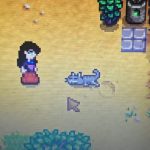Her Story:
Her book reads like a literary gothic with streaks of magical realism.
She is the kind of character who walks through life seeing not just the surface, but the textures beneath things — voices have flavours, letters shimmer, sorrow smells like iron, joy like rain on stone. She survives cruelty not by armouring herself in bitterness, but by bending, weaving softness into armour that nobody expects. Where others burn or freeze, she transmutes. She will cry, then she will stitch. She may fall, but that gives her a subject to write about. She is not naïve — though many misread her that way — she simply chooses tenderness over corrosion, again and again, even when it costs her.
If her book had a theme, it would be: “The strength in staying gentle in a world that celebrates bitterness”
Her story arcs from voicelessness to voice, from being defined by what was done to her to designing beauty that carries her fingerprints alone.
Audun’s Story:
His reads like a psychological noir, almost a Kafkaesque labyrinth.
The protagonist is hardly reliable — he is half narrator, half magician, constantly editing the story while he is in it. Rooms rearrange, mirrors show what he wants them to reflect. He wears masks and insists they are his real face. He is not a villain in his own book; he is the tragic antihero, misunderstood, noble-in-suffering. He believes this lie, even when evidence screams otherwise.
But the reader sees the cracks: the women he erases, the lives he rewrites, the virtue he steals, the way he confuses fantasy with action until harm is inevitable. It is a book about avoidance masquerading as profundity. The genre promises tragedy because the protagonist never allows the truth to sit unedited.
If his story had a theme, it would be: “The cost of running from one’s own reflection.”
The Crash:
When these two books collide, it is like a literary car crash between genres.
Her gothic-magical-realism world — heavy with truth, scars, and resilience — intersects with his noir fantasy of edits, evasions, and half-truths. It is oil meeting water, both pretend to mix.
For her, the collision is an initiation: the point where she discovers that her softness is not a liability but a compass. That even when she is gaslit, rewritten, minimised — she remains grounded in the reality of her keen senses. The spell she sees and can name it – that is her act of survival.
For him, the collision is a reveal: his narrative tricks stop working in the light she casts. Suddenly, his labyrinth is not longer infinite — it is a cul-de-sac with 2D models replicating houses, gardens, trees and dogs chasing cats. He is confronted with what happens when someone refuses to live in his fiction. It terrifies him, and so he doubles down — spinning faster, tighter, until the reader feels the claustrophobia of a man running in a shrinking maze.
In the tragic sense, her encounter becomes his greatest chance at transformation — and also his greatest loss. For her, it becomes the fire that tempers, pushes her toward reclaiming her first loves: law, metaphysics, design, joy-making.

